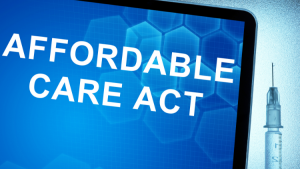
Getting the Most Out of Your Health Insurance
 Once you have chosen the right health insurance plan for you and/or your family, your goal is to use it to stay as healthy as possible at the lowest out-of-pocket cost. It can take some work, but there are many ways to get the maximum benefit from your health insurance policy and save money as you do.
Once you have chosen the right health insurance plan for you and/or your family, your goal is to use it to stay as healthy as possible at the lowest out-of-pocket cost. It can take some work, but there are many ways to get the maximum benefit from your health insurance policy and save money as you do.
Understand Your Healthcare Plan
Being aware of every detail in your policy is essential to reach your goals. Your plan’s “Summary of Benefits and Coverage” will contain all relevant information. Make sure you understand all of the restrictions. If you are keeping the same policy, look for any new features that may be different from last year’s policy when renewing. Unfortunately, this may not be as easy as you would want.
Like any contract, a health insurance policy is complicated with a lot of details and legal language you may not fully understand. You may need help interpreting all the details specific to your policy.
The requirement for and the role of your primary care provider varies by your type of plan; be aware of the specifics for your policy. However, having and using a general primary care doctor will reduce the cost of your overall healthcare.
The Affordable Care Act names essential health benefits health insurance plans must cover. Some states require policies to cover more.
Be aware of any changes in your policy. Most will happen when you renew your policy, but some may occur during the year your policy is active. You should be notified if any changes happen during the year; make sure to read all mail you get from your insurance company. Don’t assume your renewed policy has all the same features as last year and ask about or look for any changes.
Follow the Rules
 Once you are familiar with the rules and details, you must make every effort to stick to the terms of your policy.
Once you are familiar with the rules and details, you must make every effort to stick to the terms of your policy.
One of the most important things is to know and stick to your network and formulary, including your primary care provider’s role in prescribing and referring to specialists. Unfortunately, this is not always straightforward and you have to be aware of situations where you mistakenly think you are staying in your network or sticking to the formulary.
- Some of the providers at a network-approved healthcare facility may just be leasing space and may not be in your network.
- This most likely includes anesthesiologists, pathologists, neonatologists, intensivists, hospitalists, radiologists, and/or emergency room doctors.
- The same can be true of tests. For example, a lab in your healthcare provider’s office may not be in your network.
- Don’t assume your healthcare provider will always prescribe formulary drugs or refer you within your network. Always double check before picking up your prescription or making an appointment.
Keep accurate records of your payments to know when you reach your deductible and out-of-pocket limit, or in case you need them for a denied claim. You must know if there are services that don’t count toward these limits, such as out-of-network tests or visits.
Know the situations when you have to submit reimbursement requests. This will usually be emergency visits and other services from non-network providers. Make sure you check with your insurance about the proper way to submit a claim. Be aware of any deadlines to filing, usually one to two years from the visit.
Get all necessary referrals and pre-authorizations from your primary care provider.
Be aware of any type of service that has an annual or lifetime limit, since you will have to pay the full cost if/when you exceed it.
An Ounce of Prevention
 The Affordable Care Act prioritizes preventive care by mandating that it be fully covered and include the most effective measures to maintain your health. Not only is it a lot better for you to remain as healthy as possible, it is more convenient and much less expensive overall.
The Affordable Care Act prioritizes preventive care by mandating that it be fully covered and include the most effective measures to maintain your health. Not only is it a lot better for you to remain as healthy as possible, it is more convenient and much less expensive overall.
While it is important to have routine visits, staying healthy goes beyond them.
- Make sure to have all of your recommended screening tests and immunizations.
- Heed your healthcare provider’s advice about a healthy lifestyle.
- Don’t put off visits for significant illness which may become more severe and expensive to treat the longer you wait.
- Manage any chronic conditions to avoid complications and the need for escalated care.
Reducing Costs
Although it may not significantly impact your health, saving money can feel good. When it comes to saving money on healthcare costs, there are many ways you can reduce the cost of your medical care without affecting your health. On the other hand, trying to save money by avoiding healthcare visits when you need them will usually backfire and adversely affect your health and cost more.
Choose Your Care Wisely
Unless you are having a preventive care visit, you will be paying something for your visit. On the other hand, you will pay nothing if you elect to not have a visit. When you are contemplating the need for a healthcare visit there are three major things you need to consider.
- Do I really need to see a healthcare provider?
One of the observations about medical care that has been made during the COVID-19 pandemic is that healthcare providers are seeing less people in emergency rooms and for urgent visits. While this could be the result of less disease spreading and illness due to isolation and social distancing or reluctance to take the risk of exposure to seek care, we are going to see healthcare providers less often. Are there any conclusions to be learned from this?
- While COVID-19 may have convinced some that it is possible to forgo visits for self-limiting illness without consequences, many have had their conditions worsen due to reluctance to seek care.
- In this time of COVID, how do you know when you should go seek healthcare or if you can safely forgo it? The best way is to talk to your healthcare provider’s office, your health insurance companies 24/7 nurse line, or other certified call center.
 2. Do I really need the tests, prescriptions/treatment, or procedures recommended by my healthcare provider?
2. Do I really need the tests, prescriptions/treatment, or procedures recommended by my healthcare provider?
In the case of tests, it is important to ask your provider whether the results of the test will impact your care or not.
- If the test would not change your care, it is not necessary. For example, if you are already feeling better from pneumonia, the results of a chest x-ray are unlikely to make any difference to your care. In fact, your chest x-ray is likely to remain abnormal long after you recover.
- If the tests are for screening when you are otherwise healthy, they are best reserved for those conditions you are actually at risk for, such as breast or colon cancer. For example, when randomly performing screening tests, like electrolytes and liver function tests, during a routine physical, abnormal results are more likely to result in further unnecessary tests than they are to be of real concern.
Many conditions are self-limiting, will resolve on their own, can be watched without treatment in many cases, and only treated if they get worse. If needed, a prescription or procedure should have a clearly identified benefit and a detailed description of complications before you agree to it. On the other hand, don’t insist on treatments that your healthcare provider assures you will not treat what you have, such as antibiotics for viral infections or ivermectin for COVID-19.
- Which is the least expensive option or are there even less expensive alternatives?
 If you do need a test, the cost of these tests vary significantly from one facility to another — even within the same network. Shop around to find the least expensive. Independent laboratories, clinics, and testing facilities are usually less expensive than the same services in a hospital setting. The same is true of most procedures.
If you do need a test, the cost of these tests vary significantly from one facility to another — even within the same network. Shop around to find the least expensive. Independent laboratories, clinics, and testing facilities are usually less expensive than the same services in a hospital setting. The same is true of most procedures.
Emergency rooms are the most expensive option, so it is best to avoid them unless absolutely necessary. It will be less expensive to use other acute care options.
- Unfortunately, many people use the ER as their primary and acute care providers. Most do this because they have no other place to go for healthcare, usually due to being uninsured or lacking a primary care provider for whatever reason. This is not ideal for a few reasons:
- ER physicians are not trained in preventive care;
- The cost of ER care is extremely high; and
- When people can’t afford to pay ER fees, the costs are shifted to everyone else in the form of higher medical costs and increased health insurance premiums.
- There are two very good ways to avoid unnecessary ER care.
- When their office is open, the best option is seeing your primary care provider. They likely have the advantage of having an existing relationship with you and prior knowledge of your medical history.
- Visiting an urgent care center or walk-in facility is much less expensive and usually has less waiting time than an emergency room.
- Another development during the COVID crisis is how effective virtual telehealth consultations can be. This is the safest option for some during the pandemic, but may become another less expensive option for some acute visits.
Seeing specialists is expensive and should be reserved for situations where your primary care provider cannot treat you. You may have a higher coinsurance/copay when you see a specialist.
Sometimes knowing the difference between specialists will save money, for instance an optometrist usually costs less than an ophthalmologist for the same service.
Pay Less for Your Medications
For many older people and those with chronic illnesses, their medications are often the most expensive part of their healthcare. Aside from sticking to the formulary, there are other ways to save on prescription costs.
- Ask about and use generic drugs if they are available and safe for you to use. Most brand name drugs are more expensive, but few work better than the generic equivalent.
- Newer is not always better, but it is almost always more expensive. There is less experience with new drugs than older treatments, so make sure the newer medication is clearly superior to the standard treatment before committing to change treatment.
- If you use long-term medications, you can reduce costs by ordering a 90-day supply or by using a mail subscription service with your insurer.
- Shop around for the pharmacy or retailer with the best price, usually the one preferred by your insurance plan.
 Obtain a drug discount card, such as the one from NeedyMeds, that may allow you to buy medication cheaper than using your insurance. There is a Drug Pricing Calculator that will give you the cost of your medication at various locations using your card. NeedyMeds has a comprehensive listing of Patient Assistant Programs for various medications, as well as available coupons.
Obtain a drug discount card, such as the one from NeedyMeds, that may allow you to buy medication cheaper than using your insurance. There is a Drug Pricing Calculator that will give you the cost of your medication at various locations using your card. NeedyMeds has a comprehensive listing of Patient Assistant Programs for various medications, as well as available coupons.
Other Ways to Save Money on Health Insurance
You may be able to deduct medical expenses from your taxes.
- Your share of the employer group insurance plan premiums are usually made through a payroll deduction which are pre-tax dollars, and you would not be allowed to claim your premium as a deduction unless your health insurance premiums and other healthcare costs exceed 10% of your adjusted gross income.
- If your health insurance premiums and out-of-pocket expenses for things like doctor visits, surgeries, dental care, vision care, and mental health exceed 10% of your adjusted gross income, you can include that amount in your itemized deductions when you file your income tax.
- You can only claim the amount that exceeds 10%, not the total out-of-pocket costs.
- This does not include any payments you were reimbursed for or premium tax credits you received.
- You cannot do this if you take the standard deduction option.
- If you have individual health insurance and are self-employed, you can deduct the entirety of your premium payments unless you’re eligible to participate in another employer’s plan and elect not to (i.e. you have another job or are eligible to receive coverage through a spouse’s employer-sponsored plan).
With the growing access to Electronic Health Records, your test results are available to any healthcare provider in your network. In many cases this will prevent repeating tests, unless a more recent sample is needed. Healthcare providers outside your network will likely not have this access, so bring any results with you when you have an out-of-network consultation. Unfortunately, many of these consultants will only rely on tests from facilities they know and will likely repeat them.
 Use a Health Savings or Flexible Spending Account, which you can add to with pre-tax wages.
Use a Health Savings or Flexible Spending Account, which you can add to with pre-tax wages.
Use a Healthcare Broker, Health Insurance Navigator, licensed online agent, and/or Health Insurance Exchange, to compare policies.
The NeedyMeds Health Savings News Podcast addresses various issues related to the high cost of medical care and discusses ways to reduce these costs. The first two episodes discuss follow-up appointments and drug costs.
Use Your Health Insurance Perks
- Free or reduced cost access to gyms and wellness programs to improve your health, such as weight loss and smoking cessation programs.
- If your policy does not cover vision, it may offer discounts for eye exams, glasses, or contact lenses. The same may be true for other types of non-covered care; check your policy to see if these discounts are available.
- Financial incentive programs that reward you for positive changes to your lifestyle such as stopping smoking, losing weight, eating a healthy diet, or increased fitness. This can sometimes be demonstrated by wearing a fitness tracker or other devices and granting your insurance company access.
- Classes, workshops, and/or counseling on fitness, nutrition, and other health topics.
- A health coach to help you meet health goals.
- Apps that help you track your health records to follow your progress such as blood pressure reduction, or medications and remind you to take them.
Resources
- How to use your new Marketplace insurance. healthcare.gov.
- Top 10 Ways to Make Your Health Benefits Work for You. US Department of Labor.
- 8 Ways to Get the Most Out of Your Health Benefits. Own Your Health website from the Washington Health Alliance. Accessed: May 20, 2022.
- Axleton K. How to Save Money on Health Insurance. experian website. Updated: November 22, 2021. Accessed: October 11, 2022.
- Get the Most Out of Your New Health Plan. Anthem Blue Cross/Blue Shield website. Posted: June 22, 2017. Accessed: May 20, 2022.
- How to make the most of your health insurance. Hawaii Medical Service Association of Blue Cross/Blue Shield website. Updated: February 3, 2022. Accessed: May 20, 2022.
- Kasperowicz L. 8 ways to make your high-deductible health plan work. insurance.com website. Updated: September 9, 2022. Accessed: October 11, 2022.
- Lisa A. How To Get the Most Savings Out of Your Health Insurance. GO Banking Rates website. Posted: April 1, 2022. Accessed: October 11, 2022.
- Madsen R. Here’s five tips to help make the most of your health plan. Des Moines Register website. Updated: November 19, 2020. Accessed: May 20, 2022.
- Simmons-Duffin S, Tagle A. 6 tips to help you get the most out of your health insurance plan. Npr website. Updated: May 4 2022. Accessed: May 20, 2022.
